- Home
- Philip Pullman
Daemon Voices Page 19
Daemon Voices Read online
Page 19
The Grimm brothers went on to make great and lasting contributions to philology. Grimm’s Law, formulated by Jacob, describes certain sound-changes in the history of Germanic languages; and the brothers together worked on the first great German dictionary. In 1837 came what was probably the most dramatic incident in their lives; together with five other university colleagues, they refused to take an oath of allegiance to the new king of Hanover, Ernst August, because he had illegally dissolved the constitution. As a result they were dismissed from their university posts, and had to take up appointments at the University of Berlin.
But it was the Kinder- und Hausmärchen for which their names are mostly remembered. Their first edition was published in 1812, and the collection went through six further editions (Wilhelm, by this stage, doing most of the editorial work) till the seventh and final one of 1857, by which time it was immensely popular. It shares its eminence with The Arabian Nights: the two of them are the most important and influential collections of folk tales ever published. Not only did the collection grow bigger, the tales themselves changed as the nineteenth century went past, becoming in Wilhelm’s hands a little longer, in some cases more elaborate, occasionally more prudish, certainly more pious than they were to begin with.
Scholars of literature and folklore, of cultural and political history, theorists of a Freudian, Jungian, Christian, Marxist, structuralist, post-structuralist, feminist, postmodernist and every other kind of tendency have found immense riches for study in these 210 tales. But my interest has always been in how the tales worked as stories. So I decided to retell the best and most interesting of them, clearing out of the way anything that would prevent them from running freely. I didn’t want to put them in modern settings, or produce personal interpretations, or compose poetic variations on the originals; I just wanted to produce a version that was as clear as water. My guiding question has been: “How would I tell this story myself, if I’d heard it told by someone else and wanted to pass it on?”
* * *
—
THERE IS NO PSYCHOLOGY IN A FAIRY TALE. THE CHARACTERS HAVE little interior life; their motives are clear and obvious. If people are good, they are good, and if bad, they’re bad. Even when the princess in “The Three Snake Leaves” inexplicably and ungratefully turns against her husband, we know about it from the moment it happens. Nothing of that sort is concealed. The tremors and mysteries of human awareness, the whispers of memory, the promptings of half-understood regret or doubt or desire that are so much part of the subject matter of the modern novel are absent entirely. One might almost say that the characters in a fairy tale are not actually conscious.
They seldom have names of their own. More often than not they’re known by their occupation or their social position, or by a quirk of their dress: the miller, the princess, the captain, Bearskin, Little Red Riding Hood. When they do have a name it’s usually Hans, just as Jack is the hero of every British fairy tale.
The most fitting pictorial representation of fairy-tale characters seems to me to be found not in any of the beautifully illustrated editions of Grimm that have been published over the years, but in the little cardboard cut-out figures that come with a toy theatre. They are flat, not round. Only one side of them is visible to the audience, but that is the only side we need—the other side is blank. They are depicted in poses of intense activity or passion, so that their part in the drama can be easily read from a distance.
Some of the characters in fairy tales come in sets of multiples. The twelve brothers in the story of that name, the twelve princesses in “The Shoes that Were Danced to Pieces,” the seven dwarfs in the story of “Snow White”—there is little, if anything, to distinguish one from another. James Merrill’s reference to the commedia dell’arte is apposite here: the commedia character Pulcinella was the subject of a famous set of drawings by Giandomenico Tiepolo (1727–1804), depicting him not as a single character but as a swarm of identical nitwits. In one drawing there may be a dozen or more Pulcinellas all trying to make soup at the same time, or gazing in astonishment at an ostrich. Realism cannot cope with the notion of multiples; the twelve princesses who all go out every night and dance their shoes to pieces, the seven dwarfs all asleep in their beds side by side, exist in another realm altogether, between the uncanny and the absurd.
* * *
—
SWIFTNESS IS A GREAT VIRTUE IN THE FAIRY TALE. A GOOD TALE MOVES with a dreamlike speed from event to event, pausing only to say as much as is needed and no more. The best tales are perfect examples of what you do need and what you don’t: in Rudyard Kipling’s image, fires that blaze brightly because all the ashes have been raked out.
The opening of a tale, for example. All we need is the word “Once…” and we’re off:
Once there was a poor man who couldn’t support his only son any more. When the son realised this, he said, “Father, it’s no use my staying here. I’m just a burden to you. I’m going to leave home and see if I can earn a living.”
(“THE THREE SNAKE LEAVES”)
A few paragraphs later, he’s already married a king’s daughter.
Or this:
Once there was a farmer who had all the money and land he wanted, but despite his wealth there was one thing missing from his life. He and his wife had never had any children. When he met other farmers in town or at the market, they would often make fun of him and ask why he and his wife had never managed to do what their cattle did regularly. Didn’t they know how to do it? In the end he lost his temper, and when he got back home, he swore and said, “I will have a child, even if it’s a hedgehog.”
(“HANS-MY-HEDGEHOG”)
The speed is exhilarating. You can only go that fast, however, if you’re travelling light; so none of the information you’d look for in a modern work of fiction—names, appearances, background, social context, etc.—is present. And that, of course, is part of the explanation for the flatness of the characters. The tale is far more interested in what happens to them, or in what they make happen, than in their individuality.
When composing a tale of this sort, it’s not always easy to be sure about which events are necessary and which are superfluous. Anyone who wants to know how to tell a tale could do much worse than study “The Musicians of Bremen,” both a nonsensical little yarn and a masterpiece, in which the narrative carries not one unnecessary ounce. Every paragraph advances the story.
* * *
—
THERE IS NO IMAGERY IN FAIRY TALES APART FROM THE MOST OBVIous. As white as snow, as red as blood: that’s about it. Nor is there any close description of the natural world or of individuals. A forest is deep, the princess is beautiful, her hair is golden; there’s no need to say more. When what you want to know is what happens next, beautiful descriptive wordplay can only irritate.
In one story, however, there is a passage that successfully combines beautiful description with the relation of events in such a way that one would not work without the other. The story is “The Juniper Tree,” and the passage I mean comes after the wife has made her wish for a child as red as blood and as white as snow. It links her pregnancy with the passing seasons:
One month went by, and the snow vanished.
Two months went by, and the world turned green.
Three months went by, and flowers bloomed out of the earth.
Four months went by, and all the twigs on all the trees in the forest grew stronger and pressed themselves together, and the birds sang so loud that the woods resounded, and the blossom fell from the trees.
Five months went by, and the woman stood under the juniper tree. It smelled so sweet that her heart leaped in her breast, and she fell to her knees with joy.
Six months went by, and the fruit grew firm and heavy, and the woman fell still.
When seven months had gone by, she plucked the juniper berries and ate so ma
ny that she felt sick and sorrowful.
After the eighth month had gone, she called her husband and said to him, weeping, “If I die, bury me under the juniper tree.”
This is wonderful, but it’s wonderful in a curious way: there’s little any teller of this tale can do to improve it. It has to be rendered exactly as it is here, or at least the different months have to be given equally different characteristics, and carefully linked in equally meaningful ways with the growth of the child in his mother’s womb, and that growth with the juniper tree that will be instrumental in his later resurrection.
However, that is a great and rare exception. In most of these tales, just as the characters are flat, description is absent. In the later editions, it is true, Wilhelm’s telling became a little more florid and inventive, but the real interest of the tale continues to be in what happened, and what happened next. The formulas are so common, the lack of interest in the particularity of things so widespread, that it comes as a real shock to read a sentence like this in “Jorinda and Joringel”:
It was a lovely evening; the sun shone warmly on the tree trunks against the dark green of the deep woods, and turtledoves cooed mournfully in the old beech trees.
Suddenly that story stops sounding like a fairy tale and begins to sound like something composed in a literary way by a Romantic writer such as Novalis or Jean Paul. The serene, anonymous relation of events has given way, for the space of a sentence, to an individual sensibility: a single mind has felt this impression of nature, has seen these details in the mind’s eye and written them down. A writer’s command of imagery and gift for description is one of the things that make him or her unique, but fairy tales don’t come whole and unaltered from the minds of individual writers, after all; uniqueness and originality are of no interest to them.
* * *
—
WILLIAM WORDSWORTH’S THE PRELUDE, OR JAMES JOYCE’S ULYSSES, or any other literary work, exists as a text first of all. The words on the page are what it is. It’s the job of an editor or a literary critic to pay attention to what exactly those words are, and to clarify places where there are divergent readings in different editions, to make sure that the reader can encounter exactly the text that the work consists of.
But a fairy tale is not a text of that sort. It’s a transcription made on one or more occasions of the words spoken by one of many people who have told this tale. And all sorts of things, of course, affect the words that are finally written down. A storyteller might tell the tale more richly, more extravagantly, one day than the next, when he’s tired or not in the mood. A transcriber might find her own equipment failing: a cold in the head might make hearing more difficult, or cause the writing-down to be interrupted by sneezes or coughs. Another accident might affect it too: a good tale might find itself in the mouth of a less than adequate teller.
That matters a great deal, because tellers vary in their talents, their techniques, their attitudes to the process. The Grimms were highly impressed by the ability of one of their sources, Dorothea Viehmann, to tell a tale a second time in the same words as she’d used before, making it easy to transcribe; and the tales that come from her are typically structured with marvellous care and precision. I was equally impressed when working on her tales for this book.
Similarly, this teller might have a talent for comedy, that one for suspense and drama, another for pathos and sentiment. Naturally they will each choose tales that make the most of their talents. When X the great comedian tells a tale, he will invent ridiculous details or funny episodes that will be remembered and passed on, so the tale will be altered a little by his telling; and when Y the mistress of suspense tells a tale of terror, she will invent in like manner, and her inventions and changes will become part of the tradition of telling that tale, until they’re forgotten, or embellished, or improved on in their turn. The fairy tale is in a perpetual state of becoming and alteration. To keep to one version or one translation alone is to put a robin redbreast in a cage. A fairy tale is not a text.
* * *
—
CAN THE WRITER OF ANY VERSION OF A FAIRY TALE EVER COME NEAR to James Merrill’s ideal tone, “serene, anonymous”? Of course, the writer might not wish to. There have been many, and there will be many more, versions of these tales that are brimful of their author’s own dark obsessions, or brilliant personality, or political passions. The tales can stand it. But even if we want to be serene and anonymous, I think it’s probably impossible to achieve it completely, and that our personal stylistic fingerprints lie impressed on every paragraph without our knowing it.
The only thing to do, it seems to me, is to try for clarity, and stop worrying about it. Telling these stories is a delight it would be a pity to spoil by anxiety. An enormous relief and pleasure, like the mild air that refreshes the young count when he lies down to rest in “The Goose Girl at the Spring,” comes over the writer who realises that it’s not necessary to invent: the substance of the tale is there already, just as the sequence of chords in a song is there ready for the jazz musician, and our task is to step from chord to chord, from event to event, with all the lightness and swing we can. Like jazz, storytelling is an art of performance, and writing is performance too.
Finally, I’d say to anyone who wants to tell these tales, don’t be afraid to be superstitious. If you have a lucky pen, use it. If you speak with more force and wit when wearing one red sock and one blue one, dress like that. When I’m at work I’m highly superstitious. My own superstition has to do with the voice in which the story comes out. I believe that every story is attended by its own sprite, whose voice we embody when we tell the tale, and that we tell it more successfully if we approach the sprite with a certain degree of respect and courtesy. These sprites are both old and young, male and female, sentimental and cynical, sceptical and credulous, and so on, and what’s more, they’re completely amoral: like the air-spirits who helped Strong Hans escape from the cave, the story-sprites are willing to serve whoever has the ring, whoever is telling the tale. To the accusation that this is nonsense, that all you need to tell a story is a human imagination, I reply, “Of course, and this is the way my imagination works.”
But we may do our best by these tales, and find that it’s still not enough. I suspect that the finest of them have the quality that the great pianist Artur Schnabel attributed to the sonatas of Mozart: they are too easy for children and too difficult for adults.
And the fifty tales I chose to tell are, I think, the cream of the Kinder- und Hausmärchen. I have done my best for the sprites who attend each one, as did Dorothea Viehmann, Philipp Otto Runge, Dortchen Wild, and all the other tellers whose work was preserved by the great Brothers Grimm. And I hope we all, tellers and listeners alike, live happily ever after.
THIS ESSAY WAS FIRST PUBLISHED AS THE INTRODUCTION TO PHILIP PULLMAN’S RETELLING OF GRIMMS’ FAIRY TALES, FAIRY TALES FROM THE BROTHERS GRIMM (PENGUIN, 2012).
The one regret I have about the Grimm tales is that I didn’t encounter them properly until I’d left the business of classroom teaching behind. I told the Iliad and the Odyssey many times to children of twelve or thirteen; if I were going into teaching now, I’d be sure to add some of the best Grimm tales to the mix. Except, of course, that I’d be forbidden to do it, because there’s no provision for simple enjoyment in the curriculum that schools now have to follow.
A Bar at the Folies-Bergère
MODERNISM AND STORYTELLING
On the puzzles in Manet’s great painting
A Bar at the Folies-Bergère by Édouard Manet (see also this page)
This is a painting completed by Édouard Manet in the last two years of his life, when he was already suffering badly from the effects of the disease that would kill him, at the age of fifty-one, in 1883. The condition was a result of an untreated syphilis infection. Apparently one early owner of this painting was the composer Emmanuel Chabrier.
/> That is all the biographical information I’ll go into; from now on we’ll concentrate on the picture. We might end up anywhere, but at least if we start by looking closely at what’s there, we’ll be starting from the right place.
The painting itself does what the title says it does: it depicts a bar at the music hall, or the theatre (it’s hard to find a precise English equivalent) known as the Folies-Bergère. We, or the spectator’s eye, the owner of the point of view, seem to be standing in front of the counter in the position of a customer about to order a drink. In front of us there is a marble counter with various bottles arranged on it, together with a glass bowl containing oranges or mandarins and a glass with two flowers standing in water.
Behind the counter, with her hands resting on the edge, stands a young woman wearing a grey skirt, a dark velvet jacket fastened by a line of buttons and with a low-cut lacy collar. Her blonde hair is cut in a fringe in front and gathered behind. There is a large gold locket on a black ribbon around her neck. She has a gold bangle on her right forearm, two small earrings, and a corsage of pink flowers at her breast.
Everything we see is painted in a style of dash and brilliance, with textures such as the velvet of the barmaid’s jacket, the waxy skin of the oranges, and the crinkled gold foil on the champagne bottles rendered beautifully. The reflections in the various glass surfaces are especially vivid and convincing.

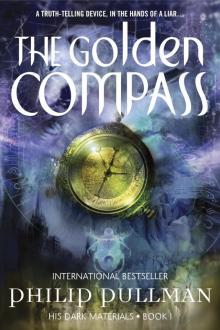 The Golden Compass
The Golden Compass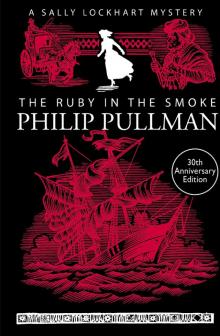 The Ruby in the Smoke
The Ruby in the Smoke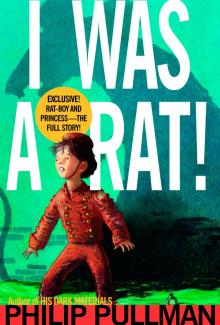 I Was a Rat!
I Was a Rat!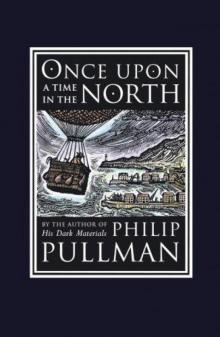 Once Upon a Time in the North
Once Upon a Time in the North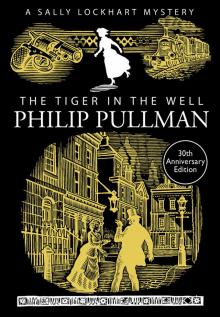 The Tiger in the Well
The Tiger in the Well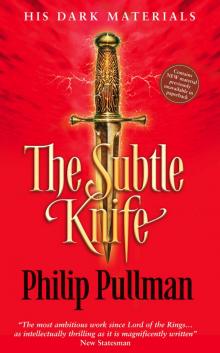 The Subtle Knife
The Subtle Knife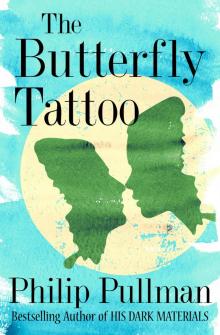 The Butterfly Tattoo
The Butterfly Tattoo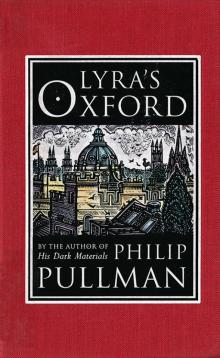 Lyra's Oxford
Lyra's Oxford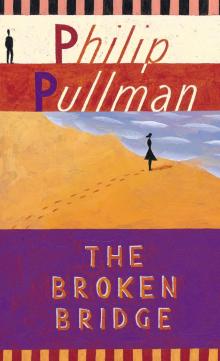 The Broken Bridge
The Broken Bridge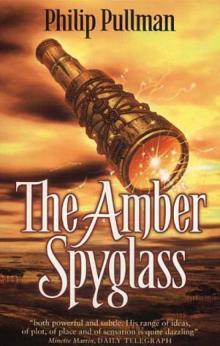 The Amber Spyglass
The Amber Spyglass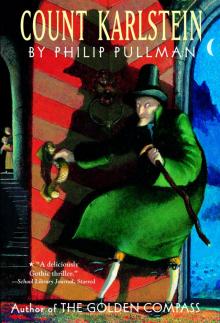 Count Karlstein
Count Karlstein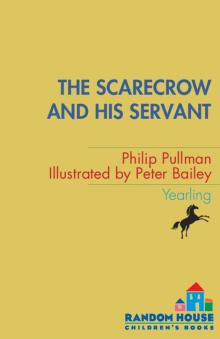 The Scarecrow and His Servant
The Scarecrow and His Servant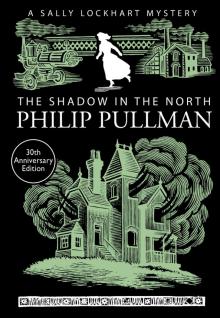 The Shadow in the North
The Shadow in the North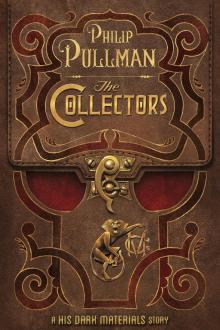 The Collectors
The Collectors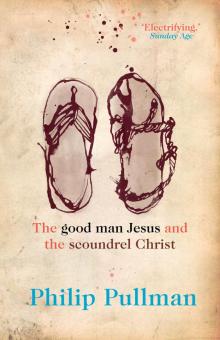 The Good Man Jesus and the Scoundrel Christ
The Good Man Jesus and the Scoundrel Christ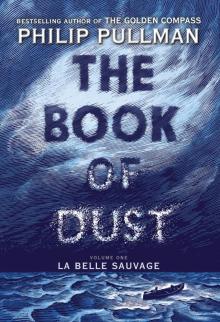 La Belle Sauvage
La Belle Sauvage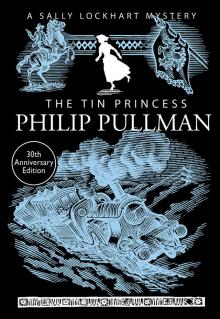 The Tin Princess
The Tin Princess The Firework-Maker's Daughter
The Firework-Maker's Daughter The Book of Dust: The Secret Commonwealth (Book of Dust, Volume 2)
The Book of Dust: The Secret Commonwealth (Book of Dust, Volume 2)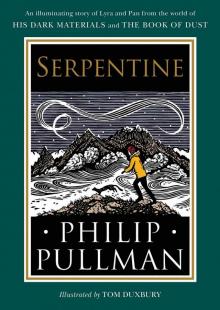 Serpentine
Serpentine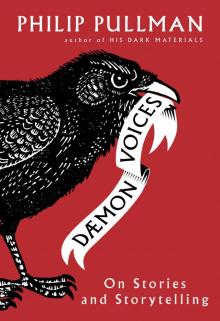 Daemon Voices
Daemon Voices The Amber Spyglass: His Dark Materials
The Amber Spyglass: His Dark Materials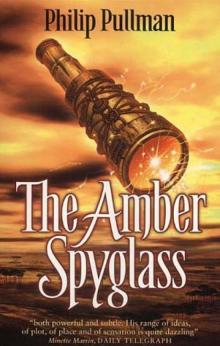 The Amber Spyglass hdm-3
The Amber Spyglass hdm-3 The Haunted Storm
The Haunted Storm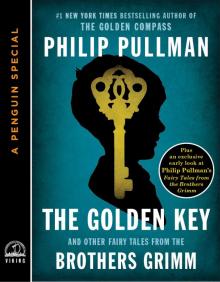 The Golden Key
The Golden Key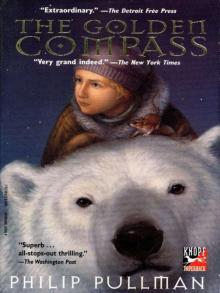 His Dark Materials 01 - The Golden Compass
His Dark Materials 01 - The Golden Compass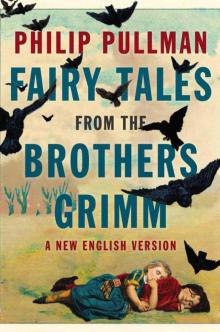 Fairy Tales from the Brothers Grimm: A New English Version
Fairy Tales from the Brothers Grimm: A New English Version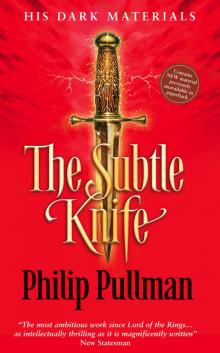 His Dark Materials 02 - The Subtle Knife
His Dark Materials 02 - The Subtle Knife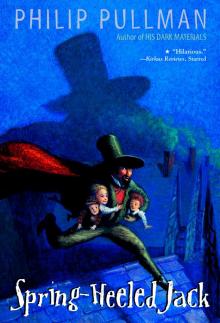 Spring-Heeled Jack
Spring-Heeled Jack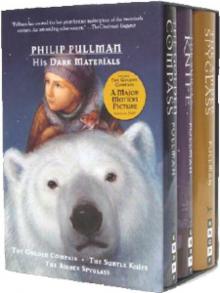 The Golden Compass hdm-1
The Golden Compass hdm-1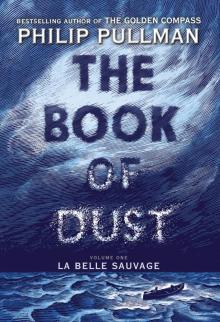 The Book of Dust, Volume 1
The Book of Dust, Volume 1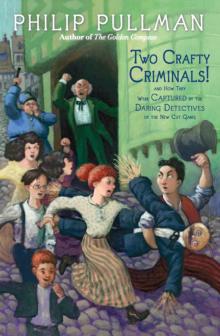 Two Crafty Criminals!
Two Crafty Criminals!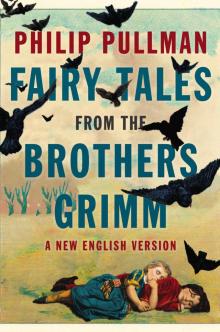 Fairy Tales from the Brothers Grimm
Fairy Tales from the Brothers Grimm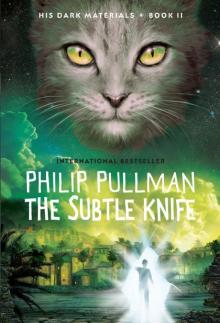 The Subtle Knife: His Dark Materials
The Subtle Knife: His Dark Materials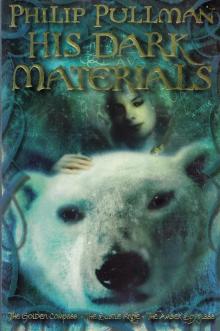 His Dark Materials Omnibus
His Dark Materials Omnibus The Golden Compass: His Dark Materials
The Golden Compass: His Dark Materials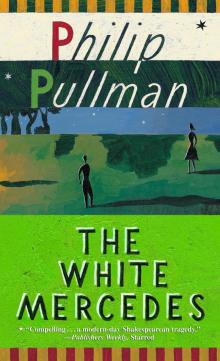 The White Mercedes
The White Mercedes